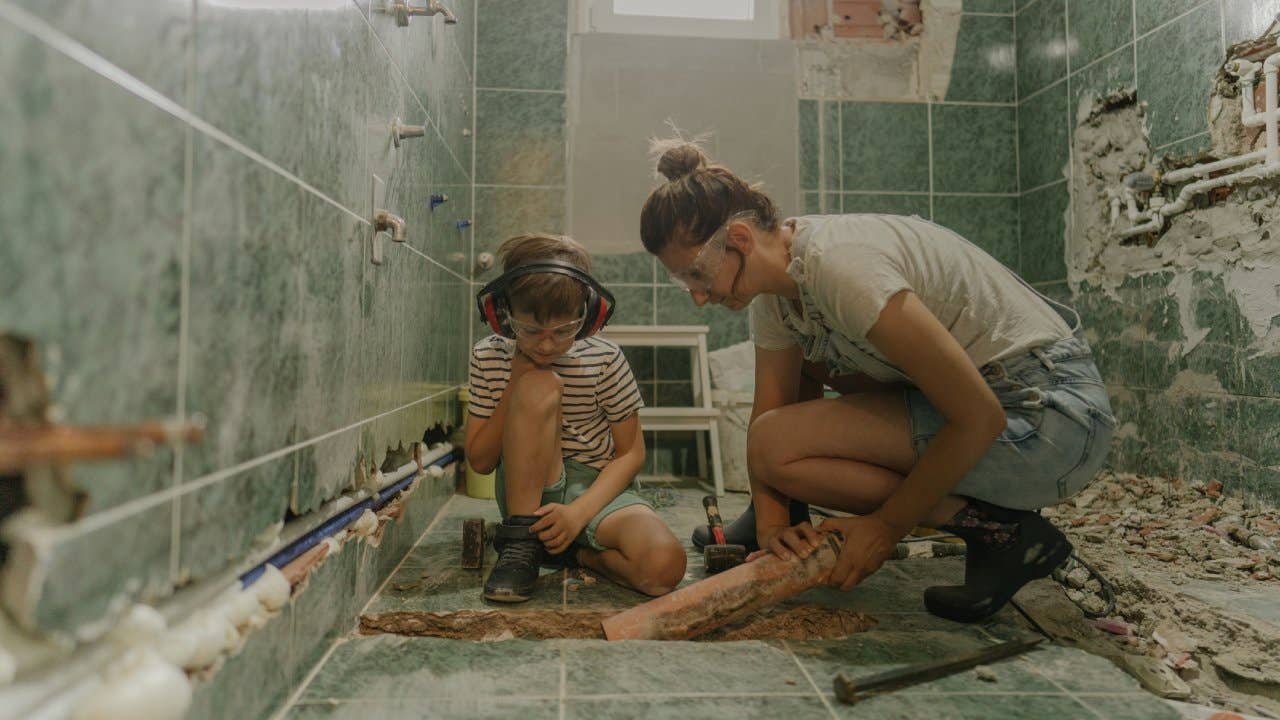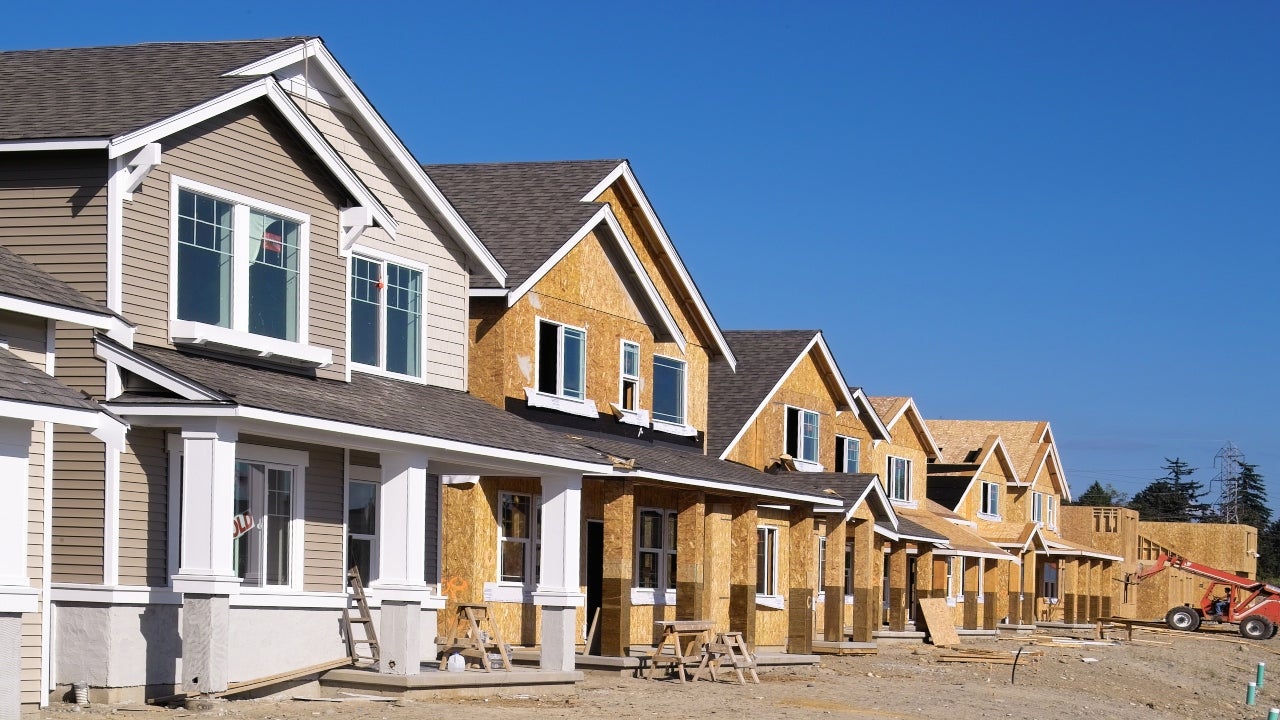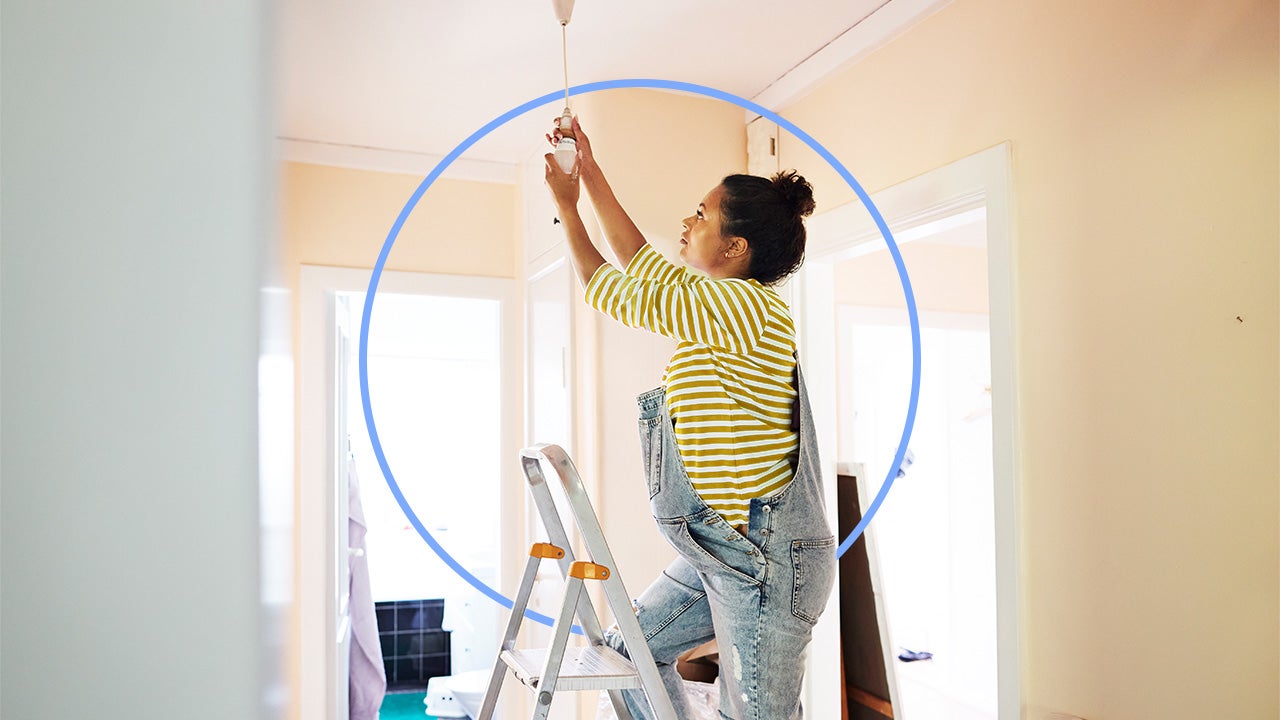Can I renovate a bathroom myself?

Remodeling a bathroom is one of the most popular home improvement projects. Unfortunately, it’s also one of the most expensive — easily running into the high five figures — and it’s getting pricier: The median spend on major remodels for both small and large bathrooms increased by as much as 20 percent, according to the 2021 Houzz Bathroom Trends Study.
Labor makes up a lot of that cost, which naturally leads to the question: Could I renovate a bathroom myself? On the surface, it sounds enticing. Do-it-yourself bathroom renovations cost on average $5,720. Compared with having a pro do the job, where the average cost runs $19,130, doing it yourself can save $13,410, according to the U.S. Census Bureau’s latest American Housing Survey.
Though this cost comparison might compel you to sprint to your nearest home improvement store, there are some factors to consider before undertaking a bathroom renovation. Bankrate’s guide tackles these challenges and shows you which remodeling projects are easier for you to do and which ones you should leave to the pros.
Is it a good idea to DIY a bathroom remodel?
It depends on the scope of your project. Cosmetic or superficial remodels, such as adding a mirror, repainting walls or ceilings, or replacing the showerhead are easy tasks to do. But if you want to make the bathroom bigger, things start to get complicated: Even a simple enlargement of the room requires experience with drywall and flooring.
And, if you’re looking at doing a complete redesign — involving installing new fixtures, changing their placement or anything having to do with power or water lines — then you need substantial knowledge of plumbing and electrical wiring, because dealing with these systems could result in hazards like flooding, fire and electrocution.
Along with skill, time is another crucial factor in determining whether you should do the renovation or not. More intricate work can take days or weeks, depending on the availability of the materials needed and whether you discover any issues requiring remedies along the way. And with bathrooms, different tasks have to be done in a precise order: a floor must be prepped before you can put in a shower stall, a sink drainpipe must be attached — at the proper height — prior to putting in that new counter.
Having a plan in place before you begin allows you to take inventory of everything you need, the steps involved and whether you have enough time to do the job well. As part of planning, “find the original layout of your [room] and map out every plumbing and electricity line found there,” says Stephen Keighery, CEO and founder of Home Buyer Louisiana, a real estate developer. “Busting a pipe open happens more often than you think.”
What bathroom renovations can you DIY?
Here are some of the projects you can do and how much savings (based on HomeAdvisor national average figures) you can expect:
- Painting the walls or ceiling: A fresh color can make the room pop or seem more spacious. Since a big part of a paint project’s price tag is the labor, wielding the brush yourself can save $380 to $800.
- Installing floor tiles: Tiling can also transform the space. Again, labor’s a significant cost here, as pros can charge anywhere from $860 to $2,600 to do the job — about two-birds of the overall price tag. Tiling isn’t tough, either, though you do need a steady hand and some precise cutting tools.
- Installing a mirror/new light fixtures: For a confined bathroom, a hanging mirror redirects the perspective, allowing the eyes to perceive the space as larger: You can save $150 to $460 doing this low-skill job yourself. The style and size of light fixtures also can dramatically alter the appearance of the room; while changing them requires some care, it’s within a DIY-er’s purview, and it can save a similar amount on electrician’s fees.
- Refreshing the faucets: Given that plumbers can charge $150 to $340 to install a faucet, doing it yourself represents a significant savings. It’s a relatively straightforward job to do, but “it’s important to buy the right faucet for the holes that already exist in the countertop (unless you plan on changing or altering the countertop),” says Enoch Heise, a journeyman plumber for Legacy Plumbing in Denison, Texas. Same goes for bathtub/shower fixtures: Be sure the new ones match the old ones in size and configuration (for example, don’t try to replace a single-handle system with a two-handle one).
- Refinishing your bathtub: Also known as reglazing or resurfacing, this facelift for the tub costs a fraction of getting a new one; and you can save even more by not paying a professional $330 to $600 to do the work for you. Instead, refinishing kits can be purchased at your local hardware store for under $100. Make sure to have adequate ventilation as you mix the hardener with the epoxy resin.
What sort of bathroom renovations should the pros do?
Though you can replace the fixtures, more fundamental changes involving elements of the plumbing or electrical systems should always be left to the professionals. “Unfortunately, many homeowners make the mistake of thinking that shifting the water pipes is an easy task when it’s most definitely not, and it can get expensive when you need pipes fixed,” says Ryan Thompson, a residential plumber in Miami. “More handy homeowners might be able to make it work, but oftentimes even minor mistakes can cause water leaks that lead to water damage.”
That’s why enlarging a bathroom or changing its layout often requires building permits, which are easier for licensed contractors to obtain (in fact, only professionals can get them in some localities). Even if it’s just a matter of knocking down walls, you still might need a permit, and might want a contractor’s expertise to minimize damage and debris.
The same goes for installing major new fixtures, like a tub or stand-alone shower stall: Even prefab shower kits can require a plumber to make sure the drain is hooked up properly and the floor prepped correctly. Not to mention these items are heavy to handle. And if you’re replacing such items, who’s going to haul the old ones away?
Time is another factor that may sway your decision. In homes with one bathroom, availability is vital, and having a contractor do the work can expedite project completion time compared with doing it yourself.
Bottom line on DIY bathroom remodel
Overall, you can save hundreds to thousands of dollars doing bathroom renovations on your own but be realistic about your skillset and plan carefully before you begin. For superficial or cosmetic upgrades, you may be able to do the job quickly. When replacing major fixtures or fundamentally changing the bathroom’s footprint, you should possess substantial plumbing, electrical, and drywall experience — and if you don’t, it’s best to leave the work to the pros.
One compromise might be to make it a hybrid project: Leave the design, construction parts and bigger installs to contractors, then do the finishing touches (painting, tiling, etc.) yourself. Or do some of the nitty-gritty work under the contractor’s supervision. You’re still saving money but also have a trained eye examining everything — and ready to deal with any problems you encounter along the way.
You may also like

Should I buy a house or build one?


Home renovations and repairs: Should you DIY or hire a pro?



